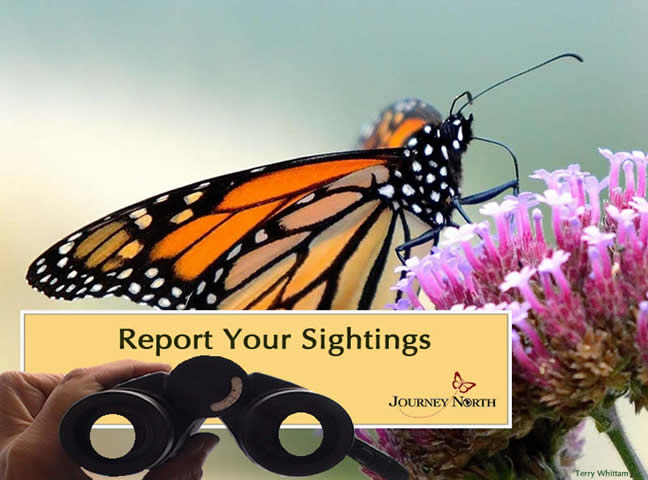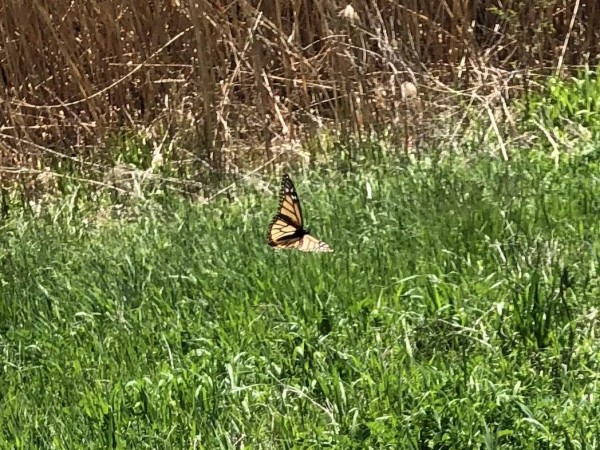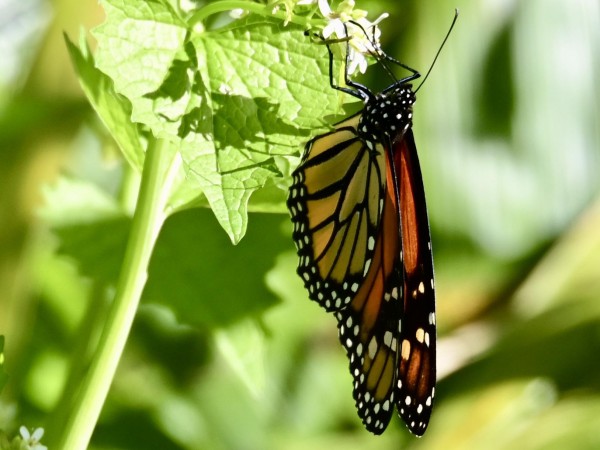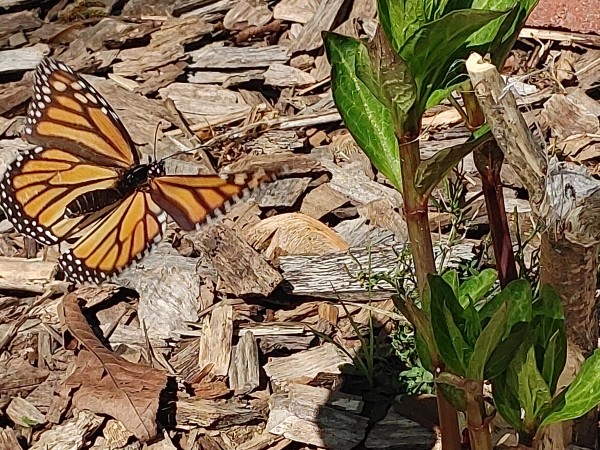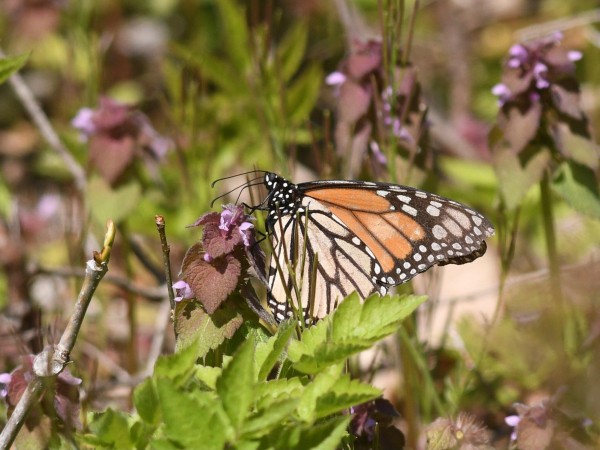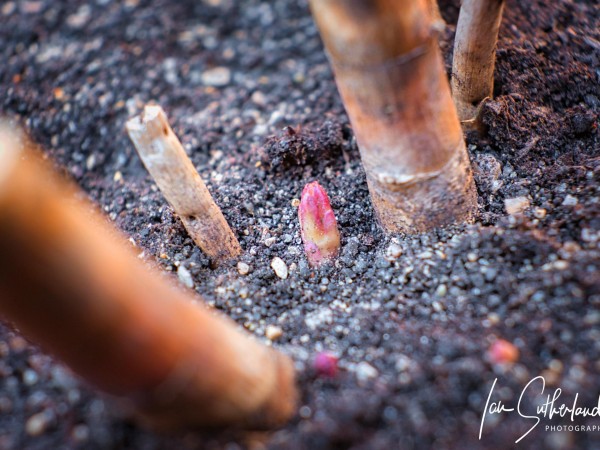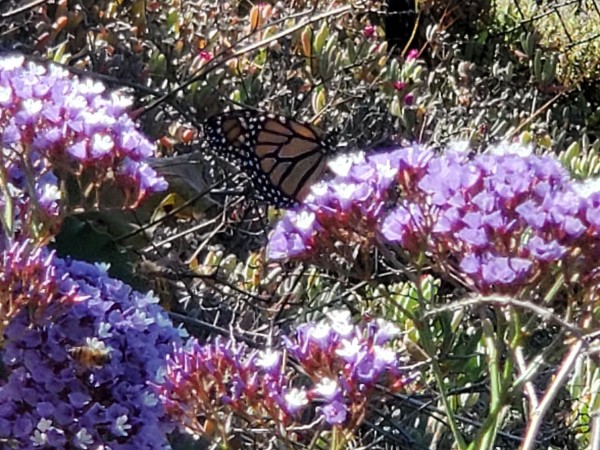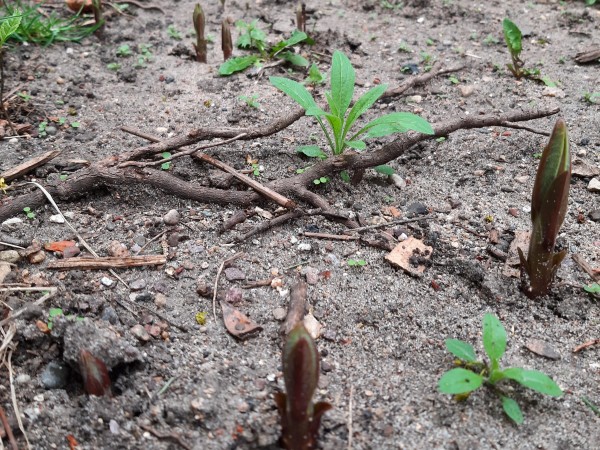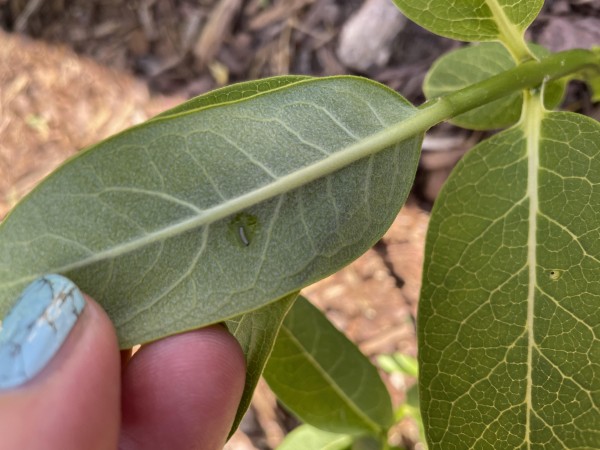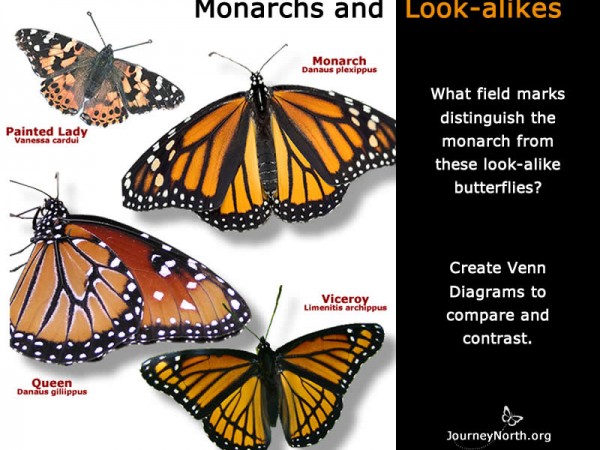Moving Northward
Eastern Monarch Population
Migrating Monarchs
From the Midwest to the Mid-Atlantic, the leading edge of monarch migration is hovering around latitude 40-42°N. This is an increase from last week, when the leading edge was concentrated around 39-40°N. Based on our Monarch Adult (FIRST sighted) map, can you predict where monarchs will arrive next?
Jerry in Edwards, IL: "[Monarch Butterfly] was unexpected, couldn’t tell if male or female. Faded color but still very fast." (05/01/2021)
Wijbren in Pitman, NJ: "I was totally surprised seeing a monarch all the way up [here] so early this year." (05/01/2021)
Jessica in Milford, OH: "First monarch of the season. She left several eggs on our common and swamp milkweed." (05/01/2021)
Point Pelee National Park in Ontario is an important breeding and stopover site for monarchs migrating into Canada. Darlene, a longtime Journey North contributor, reported an early observation of a faded monarch this past Sunday:
"18°c, mostly sunny at approximately 11:30 am in Cactus Field at Point Pelee National Park a faded female Monarch was seen nectaring on Red Dead-nettle blossoms. The area had very strong 40km SW wind/50-60km gusts from day prior into today." (05/02/2021)
Milkweed, Eggs, and Larvae
With migration moving north quickly, is milkweed growth keeping pace? The good news is that based on reports from Journey North observers, milkweed emergence is well ahead of migration. But will the plants grow fast enough to be ready for a surge of arriving monarchs?
Ian in Winnipeg, MB: "My first sighting of buds poking through the soil. Asclepias Incarnata in it's second year!!" (05/01/2021)
Patti in Hopkins, MN: "Yesterday was 87 F. Today 66F and rain. These are common milkweed. Three year old plants that weren't up yesterday in Hopkins, Minnesota. Thank you heat wave." (05/02/2021)
The quick pace of this year's migration is evident in the surprise expressed by some Journey North observers, especially those finding eggs and larvae.
Anne in Little Falls, NJ: "Counted roughly 50 monarch eggs - 1st time seeing them so early - don't usually see until mid-late June." (04/30/2021)
Bethany in Urbanna, VA: "This is roughly 2 weeks sooner than we saw our first larvae last year. Many more eggs waiting to hatch." (04/30/2021)
Western Monarch Population
Letter from Gail Morris: Western Monarch Spring Report #10
Out West, migration is moving slowly. But the pace could increase as the lower deserts warm up. Gail Morris writes, "Reports this week noted little movement of monarchs in California, but their numbers increased slowly in Arizona and New Mexico. Everyone is watching closely for the first sighting in Utah as warm and breezy weather continues to bathe the region . . . The lower deserts will flirt with their first 100°F temperatures this week, likely encouraging monarchs to continue north and east to cooler locations. Be sure to take your camera or phone along on your neighborhood stroll or hike and tell us what you see."
Read more of Gail Morris’ Letter: Western Monarch Spring Report #10»
Zoom Presentation: Bicycling With Butterflies
Sara Dykman, author of Bicycling with Butterflies: My 10,201-mile Journey Following the Monarch Migration, will join Georgia Center for the Book and Susan Meyers of Monarchs Across Georgia to discuss her book. This virtual event on May 12 at 6:00 pm CDT | 7:00 pm EDT is free and open to the public, but registration is required to receive the link to the Zoom webinar.
Keep Reporting and Include Photos!
Migratory activity will continue to pick up throughout May. Report your monarch butterfly observations to Journey North. If possible, please include photos and ensure your photo is properly rotated. Photos help verify reports and we enjoy sharing them with our Journey North community!


